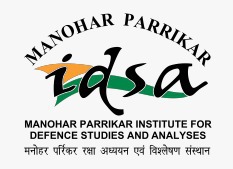The Centre tracks relations between India and the countries of North America. US and Canadian internal developments are also monitored to have a better understanding of their role as drivers of foreign and domestic policies. The large Indian diaspora in these two countries also serves as a bridge for strengthening bilateral relations.
The Centre also actively tracks and analyses trends in strategic technologies, with principal focus on critical technologies and their implications for national security. It addresses evolving threats in space security and cyber security, ensuring comprehensive research into these critical domains. The other mandate of the Centre is to undertake research on Biological and Chemical Weapons with a focus on studying the dangers of proliferation and terrorism.
No posts of Books and Monograph.
The People’s Liberation Army (PLA) has been sensitive to continuous changes in geo-political and geo-strategic contexts, as well as the changing nature of warfare. It has fashioned its responses by evolving appropriate military doctrines and strategies to meet future threats and challenges. Thus, China’s military doctrine has over the years undergone a transition from people’s war to ‘people’s war under modern conditions’ and thereafter from ‘limited local war’ to ‘limited war under high tech conditions’.
Both India and Japan have evinced interest in deploying defences against ballistic missiles because of the threat they pose. Significantly, both have shifted their stance on US Ballistic Missile Defence (BMD), from previous opposition to active support. Notwithstanding certain basic differences between India and Japan on the nature and degree of interest and participation at present, shared interests offer an opportunity for them to cooperate with each other on the BMD issue to further consolidate the 'strategic partnership' understanding they have evolved.
Space science, like nuclear science and all technology, has no conscience of its own. Whether it will become a force for good or ill depends on man, and only if the United States occupies a position of preeminence can we help decide whether this new ocean will be a sea of peace or a new terrifying theatre of war.
President John F. Kennedy, Address to Rice University, September 12, 1962
A recent news item indicated that the US Government had been planning a website that would enable people to place bets on the likelihood of terrorist events. It was hoped that a study of market trends would enable intelligence agencies to anticipate and prevent such events.
Almost every new technology developed has brought great benefits attached with some risks. To each ‘technology’, there is an ‘antitechnology’, making it a double edged weapon. But whatever be the risks, the progress just carries on, and new methods are found to tackle the risks. The phenomenal growth of computer and communication technologies, or ICT, is no exception and the main risk it has brought along with its benefits is that it has provided terrorist organisations great advantage in their nefarious activities.
The demand for an infallible missile and homeland defence against anticipatory threats from adversarial state actors as well as amorphous non-state actors has become accentuated in the US in the post-9/11 era. In consonance, the importance of anti-missile defence shield has grown in primacy and has witnessed a changing orientation to an amalgamation of an integrated Layered Defence System. However, the two main question on the development of such a system are whether it will reach a meaningful completion and whether such a system will be cost-effectived.
Against the backdrop of the Paris attacks, there is a need to introspect about the effectiveness of the approaches adopted by major states to counter terrorism.
There is a need for India to participate in Project Loon to increase its ‘internet footprint’. The project perfectly fits into the scheme of ‘Digital India’. It could also lead to surge in India’s interest in near-space technologies.
For China, the Belt and Road initiative is a long-term strategy designed for it to assume a bigger role in global affairs through the business route. Various aerial and space-based platforms will play an important in making this strategy successful.
Hacker groups have turned their attention to stock markets not just to disrupt operations but also to trade and make financial gains.
India’s increasing investments in space for strategic purposes clearly indicates the rising relevance of space assets for the armed forces.
While the first watt of power from foreign-aided projects may take many years to come, the 10th anniversary coincides with major transformations in India’s indigenous nuclear energy programme.
While the Wassenaar Arrangement has instant recall in nuclear circles, it has only recently become a source of turmoil in cybersecurity, after the US Bureau of Industry and Security published rules that are applicable to cyber technologies.
While India has a reliable vehicle for launching less than 2 tonne satellites into LEO, it lacks the necessary infrastructure to obtain larger commercial benefits from this capability.
East and Southeast Asia are known to get affected by various diseases routinely. Particularly, various waterborne and other diseases likely malaria and dengue fever commonly affect the regions. There is a concern that global warming may translate into explosive growth of mosquito-borne diseases. In addition to this, growing number of natural disasters are found escalating the health related challenges. All this eventually poses a threat to health, economic and human security.
While the attack on the chemical warehouse in France and the accident in the Taiwanese park are not cases of chemical terrorism in a classical sense, they can be analysed against the backdrop of a ‘chemical incident’.



